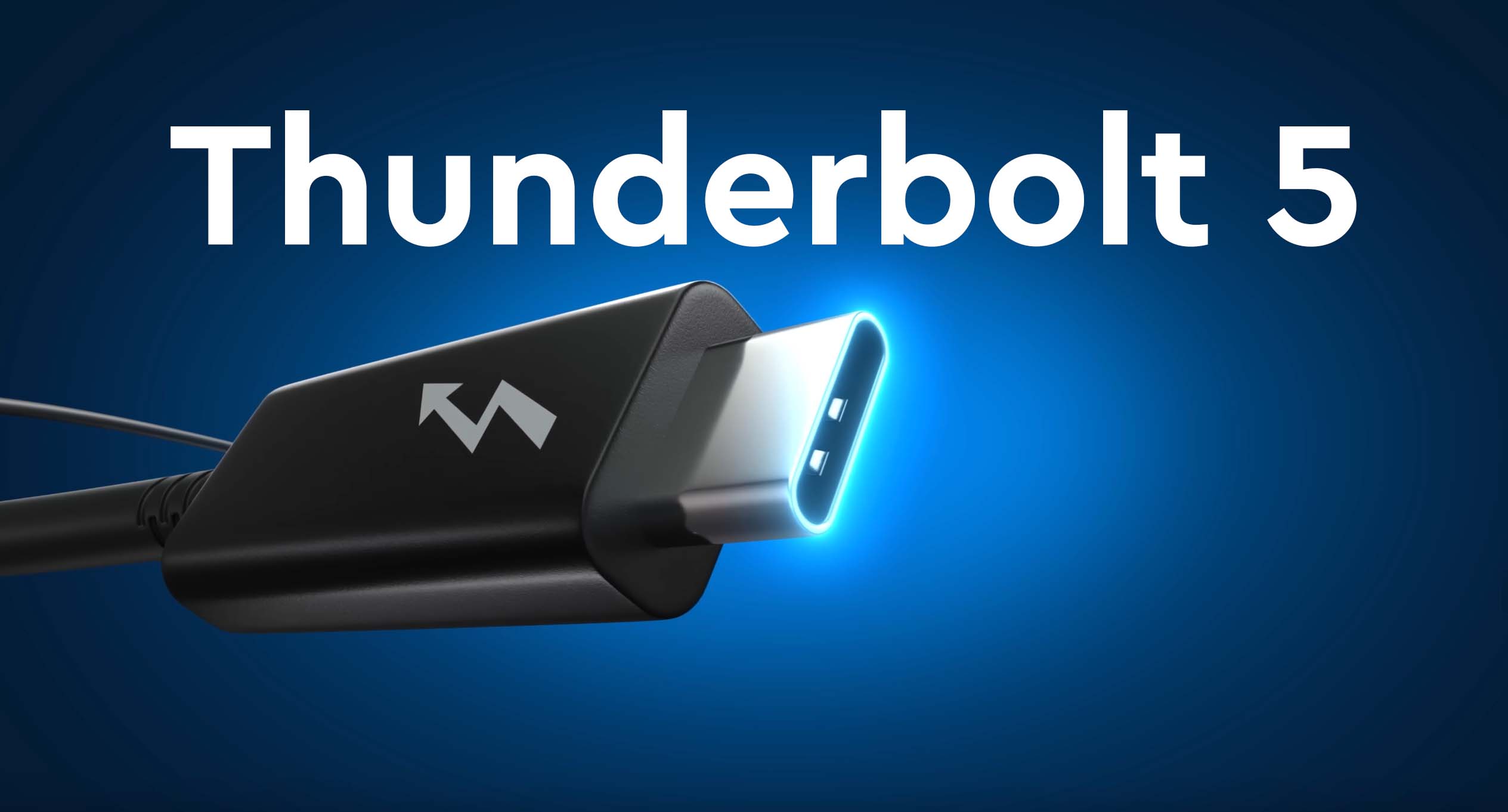Thunderbolt 5: A Revolution in Data Transfer, Charging, and Display Connectivity — All Through a Single Port
The tech world never stops evolving, and one of the most groundbreaking advancements in recent years is the new iteration of the Thunderbolt interface. This is far more than just another port — it's a universal data transmission standard that replaces multiple connectors with one, delivering staggering speed, high-power charging, and support for next-generation displays. Thunderbolt 5 is already integrated into Apple’s latest devices and is poised to transform the way we interact with technology.
Thunderbolt 5 represents a monumental leap in speed, functionality, and device capability — all through a single connection.
From Light Peak to Thunderbolt 5: The Evolution of Innovation
The story of Thunderbolt began with a technology called Light Peak, introduced by Intel in 2009. Originally envisioned as an optical fiber interface for data transmission at speeds up to 100 Gbps over distances greater than 100 meters, the concept was revolutionary. However, due to cost and practicality, copper wiring was eventually used instead.
This pivot led to the birth of Thunderbolt, first introduced in 2011 in the MacBook Pro. The first generation delivered speeds of up to 10 Gbps in both directions and combined DisplayPort and PCI Express protocols, allowing video and data to be transmitted over a single cable.
Thunderbolt 2 and 3: Expanding Capabilities
By 2013, Thunderbolt 2 emerged with double the bandwidth — up to 20 Gbps — while retaining backward compatibility with existing cables. It introduced logical channel aggregation, enhancing efficiency by combining two data channels into one.
Thunderbolt 3, launched in 2015, was a game-changer. With the introduction of the USB-C connector, transfer speeds soared to 40 Gbps. It supported two 4K displays or one 5K display, delivered up to 100W of power — enough to charge laptops — and integrated USB 3.1 support, making it a truly universal port for professionals and tech enthusiasts alike.
Thunderbolt 4: Reliability and Security Improvements
Released in 2020, Thunderbolt 4 didn’t increase speeds but brought several key enhancements:
- PCI Express bandwidth increased to 32 Gbps;
- Mandatory implementation of VTD (Virtualization Technology for Directed I/O) for memory protection;
- Support for waking up a system via connected peripherals.
Thunderbolt 5: Ushering in a New Era of Connectivity
Thunderbolt 5 marks a quantum leap forward. The base speed now reaches 80 Gbps, and with Bandwidth Boost mode, it can hit up to 120 Gbps by using three channels for data transmission and one for reception.
Key capabilities of Thunderbolt 5 include:
- Support for two 8K monitors;
- Compatibility with DisplayPort 2.1, USB 4, USB 3, and PCIe 4.0;
- Backward compatibility with Thunderbolt 3 and 4;
- Power delivery up to 240W.
Thunderbolt 5 is a dream come true for professionals in video editing, 3D rendering, digital art, and gaming. It’s designed to handle the most demanding workloads with ease.
Who Needs These Speeds — and Why?
Primarily, Thunderbolt 5 caters to professionals — filmmakers, graphic designers, engineers, and content creators. Its high bandwidth allows for seamless handling of large files, multi-monitor setups, and high-power devices — all through one cable.
Gamers and VR/AR developers also benefit from this standard, thanks to its low latency and bandwidth capacity. Intel envisions Thunderbolt 5 as the backbone of next-gen connectivity across industries.
The Future Is Thunderbolt
In just over a decade, Thunderbolt has transformed from a niche solution into a universally embraced standard. Its evolution speaks volumes:
- Data transfer speed increased 12x — from 10 Gbps to 120 Gbps;
- Power output grew over 20x — from 10W to 240W;
- One cable now replaces multiple ports and adapters.
Thunderbolt 5 is already featured in Apple’s Mac Mini and MacBook Pro with M4 Pro and M4 Max chips — a clear sign that the future of creative and professional workflows lies in unified, high-speed interfaces.
One port. Infinite potential. Thunderbolt 5 is not just a technology — it’s the foundation for the devices of tomorrow.
Conclusion
Thunderbolt 5 unlocks unprecedented capabilities for data transmission, display support, and power delivery. It’s more than just fast — it’s a truly universal tool for modern digital ecosystems. Engineered with the future in mind, it sets a new benchmark in connectivity and simplifies how we connect our devices. As adoption grows, Thunderbolt 5 is set to become the new global standard for seamless, high-performance digital interaction.


